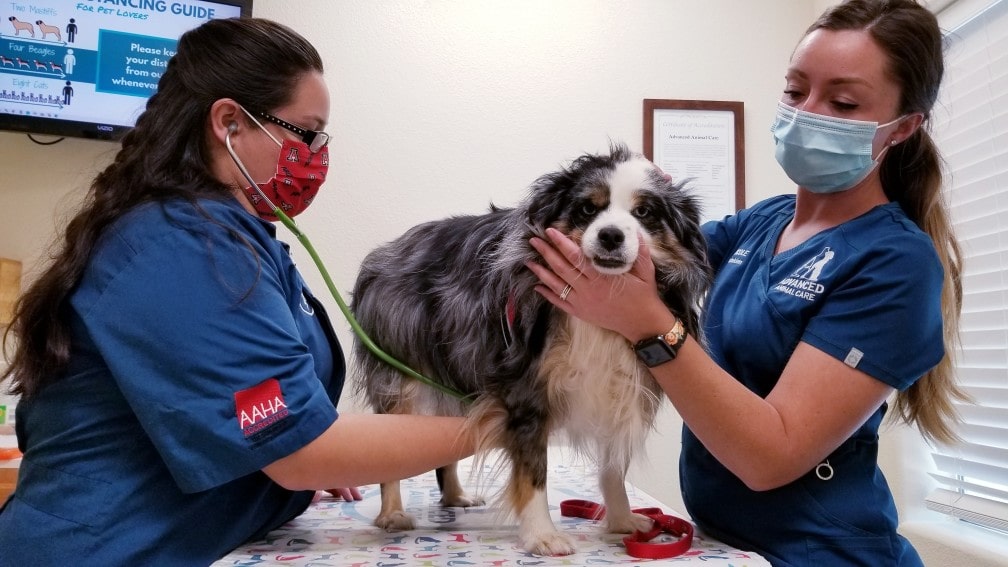Most dogs are resilient and don’t bother their human parents when they get small cuts or bruises. It is why sometimes it’s difficult to know whether your dog is in pain or why.
A dog suffering from pain can be due to many reasons, but most commonly, it’s something either acute or chronic.
Acute pains are like pains from any sudden injury, surgery, or illness, whereas chronic pains arise out of any long-term diseases like arthritis, dental issues, or cancer.
For any parent, seeing kids in pain can be mortifying. As a pet parent, you must notify the symptoms of a dog in pain.
11 Warning Signs Your Dog Is in Pain
Quick Note: If your dog is in pain, do not give any human or other animal medications.
Pain medications for animals vary not only with species but also with breeds. Therefore, even if you have more than one dog, instead of medicating them yourself, consult with your veterinarian.
1. Aggressive or Antisocial Behavior
Is your dog not greeting you at the door or avoiding your contact recently?
If your dog suddenly stops playing with you or prefers hiding away, it’s a sign they might not be feeling well and suffering from pain.
2. Changes in Drinking and Eating Habits and Sleeping Patterns
As a pet parent, you know quite well about your dog’s eating, drinking, and sleeping habits. A dog in pain loses appetite. They may have difficulty eating firm chews or dried food. Also, they may sleep more, and their water consumption may change.
Keep a close watch on these subtle changes to know if your dog is suffering from any pain.
3. Increase Vocal Behavior
Another visible symptom of a dog in pain is the changes in its vocal attitude. Suddenly, if your dog becomes more vocal-like snarling, growling, or even howling, it’s a sign they are in pain.
4. Excessive Grooming Behavior
Whether they are internal or external wounds, dogs have a habit of licking them. It’s an attempt to provide some soothing effect to the hurting region. If you find your dog excessively licking, consider it a sign of being in pain and discomfort.
5. Heavy Panting or Changes in Breathing Patterns
Due to physical exertion or heat, dogs pant heavily. But if you see your pet buddy panting heavily without any reason, it’s a sign; that your dog is in pain.
Does your dog take shallow breaths nowadays? They might be in severe pain, causing them difficulty in breathing.
Take them to a Vet Immediately!
6. Trembling or Shaking
Without any cold weather, if you see your dog trembling or shaking, do not neglect it. It’s a sign of your dog in pain. It can also be a symptom of a disease like pancreatitis, kidney issues, or even poisoning.
7. Abrupt changes in the Posture and Movement
Did you notice your dog going in a rigid stance often or doing prayer positions frequently?
Is the face, legs, or paws of your dog swollen?
If you often see your dog taking a prayer position (both front legs on the floor while back legs are in a standing position), it’s a sign your dog suffering from abdominal pain. Moreover, the swelling also indicates your dog is in pain due to some infection, inflammation, or cancer.
8. Reduced Mobility
Is your dog always lethargic? Do they show reluctance to climb stairs or play with you suddenly?
These are symptoms of dog pain due to injury or arthritis. Watch them closely while they walk. If your dog limps or shows signs of stiffness in the legs or has sore paws, immediately get your dog checked with a vet.
9. Seeking or Ignoring your Affection
Every dog responds differently to pain. Some may like to have constant cuddling and affection, while others may prefer hiding away from us. As a pet parent, talk to a vet if you notice such changes in its behavior.
10. Difficulty Relaxing
Like us, if in pain, dogs face difficulty in relaxing or maintaining one posture for a long duration. It hurts them to sit or lie down comfortably. If you see it, consider it as a sign of your dog in pain.
11. Frequent Eye Squinting and changes in Tail Posture
Like us, dogs too squint their eyes when they feel pain. However, it’s a normal reaction if it’s suffering from any eye problems. Alternatively, if your dog is suffering from pain, you’ll notice its pupils expanded.
Furthermore, as a symptom of dog pain, look at their tail posture. If it’s sagged or between their legs, it’s a sign they are not feeling comfortable and might be in pain.
Conclusion
Remember, you are the voice of your dog when they are in pain.
Get their regular annual checkups done, and do not neglect the symptoms of dog pain. If you have any questions about dog pain, let us know in the comment section below.

 DogExpress
DogExpress
























 in Chandigarh, India.
in Chandigarh, India. 
